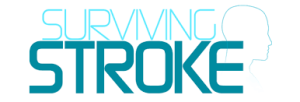Stroke Overview and Recovery – Key Facts
NeuroRehab Team
Thursday, February 25th, 2016
NeuroplasticityStroke Statistics

What is a Stroke?
A stroke, or cerebrovascular accident (CVA), is the rapid loss of brain function(s) due to disturbance in the blood supply to the brain. When you have an ischemic stroke, there is an interruption, or reduction, of the blood supply. Eighty percent of all strokes occur due to ischemia. With a hemorrhagic stroke, there is bleeding in the brain. After about 4 minutes without blood and oxygen, brain cells become damaged and may die. When brain cells are damaged or die, the body parts controlled by those cells cannot function. The loss of function may be mild or severe and temporary or permanent. This depends on where and how much of the brain is damaged and how fast the blood supply can be returned to the affected cells.
Recovering from a neurological injury, such as stroke, can be challenging and unpredictable. While some may see improvement early on, others may require months or years of therapy before meaningful progress can be made. One’s overall recovery mainly depends on the location and amount of brain damage caused by the stroke, the ability of other healthy areas of the brain to take over functioning for the damaged areas, and rehabilitation. In general, the less damage there is to the brain tissue, the greater the chances of a successful recovery.
Stroke Statistics
- 7 MM stroke survivors in the USA are over the age of 20
- Someone has a stroke every 40 seconds.
- Stroke kills every 4 minutes.
- 133,000 deaths per year are caused by stroke.
- 5th cause of death.
- 795,000 strokes occur every year.
- 600,000 are first attacks.
- 185,000 are recurring strokes.
- The numbers are expected to double by 2030.
- There are approximately 5.1 million stroke survivors alive today in the US.
Demographics of a Stroke Survivor
- Female (59.4%)
- Caucasian (80.3%)
- Age — Mean, 56.52 (Range: 19-89)
- Ischemic stroke (55.7%)
- Age during first stroke – Mean, 50.61 (Range: 1-88)
- Primary caregiver – Self (46.2%) and spouse (38.5%)
- Insured by employer (54.9%)
- Not aware of stroke risk before stroke (83.9%)
- Pre-stroke, it was not a prevalent health concern (79.0%)
- stroke is the leading cause of adult disability
- Cost 73 Billion in 2010
- African Americans are 2x more at risk
National Stroke Association/American Stroke Association
Effects of Stroke
- 10% of stroke survivors recover almost completely
- 25% recover with minor impairments
- 40% experience moderate-to-severe impairments that require special care
- 10% require care in a nursing home or long-term care facility
- 15% die shortly after
Common Impairments

During the rehabilitation process, the focus will be on relearning skills that are lost due to the injury. Common impairments include:
- Strength
- Sensation
- Coordination
- Balance
- Spasticity
- Cognition
- Communication
- Swallowing
- Vision
- Emotional
- Pain
- Fatigue
Find Therapy Solutions For Your Recovery
Factors Affecting Recovery
- Amount of damage the stroke has caused
- How soon treatment begins
- Motivation and compliance
- Skill level of rehabilitation team
- Rehabilitation technology offered
- Family and friends encouragement and support
Rewiring the Brain
Scientists once believed that the brain stopped developing after the first few years of life. They thought that connections formed between the brain’s nerve cells during an early “critical period” and then were permanent as we age. Scientists also thought that if a particular area of the adult brain was damaged, the nerve cells could not form new connections, and the functions controlled by that area of the brain would be lost.
Fortunately, new research on animals and humans has completely evolved with data now showing that the adult brain not only is dynamic, but is constantly adapting and reorganizing based on one’s environment and behavioral experiences. The latest advances in neurorehabilitation research have resulted in positive discoveries that can benefit millions living with neurological deficits. Clinical studies now show how the stroke-damaged brain can respond to treatment, even after the crucial early months when most recovery typically occurs.
Neuroplasticity, also known as cortical plasticity, refers to the brain’s remarkable ability to reorganize or rewire itself by forging new neural connections based on individual experiences, lifestyle and environment.
Facts
- Stimulated through challenging activities, the brain has the ability to reorganize and form new connections between the intact neurons.
- Healthy surrounding brain tissue can take over some of the functions of the damaged area.
- Lack of use of the affected limb will cause the brain tissue representing the injured area to decline.
- Earlier initiation of rehabilitation therapy is required for a better functional outcome.

